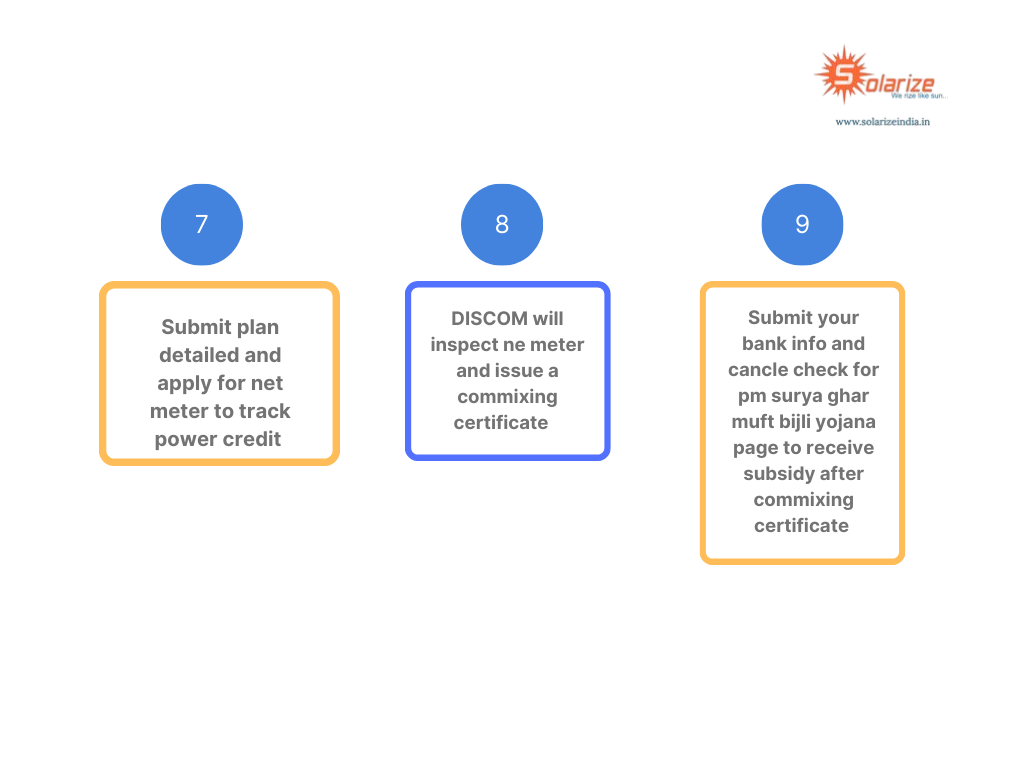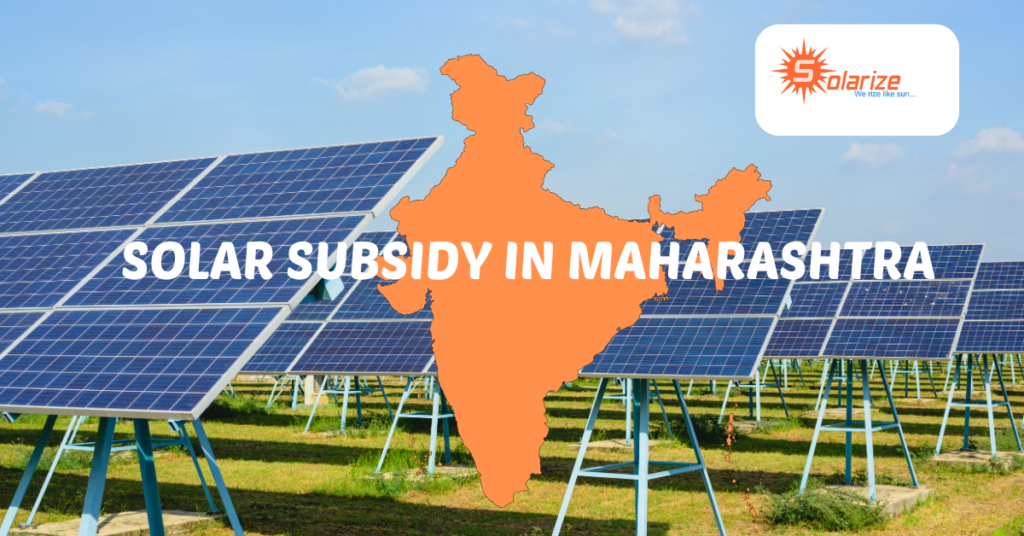Prime Minister Narendra Modi introduced the historic PM Surya Ghar Muft Bijli Yojana on February 29, 2024, with an investment of ₹75,021 crore. As of August 2024, the movement had received 14.84 lakh applications and 1.28 crore registrations in both the residential and commercial divisions throughout India since its launch.
In addition to playing a vital role in India’s transition to net zero carbon emissions, housing societies are investigating ways to harness the sun’s power to achieve energy independence and significant electricity bill savings with the promise of significant subsidies.
The 400 kW solar installation at Shree Anand Shree Housing Society Pune, which is PV Solarize largest housing society solar installation, is a superb illustration of project cost savings on solar installation. The housing society was able to acquire a ₹60 lakh subsidy, which resulted in a remarkable ~27% reduction in the overall project cost.
Another example is our 100 kW project at Dahanukar Society Pune. This housing society secured a subsidy of ₹18 lakhs, slashing the total project cost by an impressive ~30%.
Within the next two years, the savings on electricity bills from solar power will outweigh the initial investment, and society will benefit from free electricity.
This page will help you understand whether you are a committee or RWA member considering adopting solar by taking advantage of the housing society’s solar subsidy:
- State-by-state solar system subsidies for housing societies
- An illustration showing the approximate costs of switching to solar power, both with and without subsidies
- How to submit an application for the solar subsidy
- The steps involved in installing solar after submitting a subsidy application
India's Housing Societies Solar Subsidy


The PM Surya Ghar Muft Bijli Yojana initiative offers substantial financial support to housing societies who want to embrace solar energy on a wider scale, in addition to offering hefty subsidies to individual homeowners.
A ₹18,000 per kW subsidy is available to housing societies for installations up to 500 kW. This holds true for every Indian state. For communities wishing to switch to solar electricity, this subsidy is revolutionary because it can lower the total cost by up to ₹90 lakhs.
Housing societies can significantly reduce their electricity expenses by taking advantage of this opportunity; many are predicted to see complete savings within a few years of installation.
How To Apply For Solar Subsidy
It’s easy to apply for the PM Surya Ghar Muft Bijli Yojana’s solar subsidy. You must, however, collaborate with a trustworthy solar supplier, such as PV Solarize who can help your housing society at every stage. Selecting the correct vendor can make all the difference if you’re a society member who is excited to see your CHS go solar and ensure a successful application.
To assist you with the procedure, below is a detailed guide.
Step 1: Go to the PM Surya Ghar Muft Bijli Yojana website, which is the national rooftop solar gateway. On the homepage, click the “Apply for Rooftop Solar” button on the left.
Step 2: Navigate to the “Registration” area. You ought to pick your electricity distribution provider (DISCOM), state, and district. Click “Next” to proceed after entering your customer account number.
Step 3: Type in your email address and mobile number. Click “Proceed” after entering these details.
Step 4: Provide the necessary information on the “Apply for Rooftop Solar Installation” form. This will include your electrical connection, property details, and personal information. After that, submit your application by clicking the “Final Submission” option after uploading the required files.
Step 5: You must await your DISCOM’s feasibility clearance after submitting your application. This phase is crucial since it establishes whether your home qualifies for solar energy installation. You can start the installation procedure after approval.
Step 6: You can start installing solar panels as soon as the feasibility approval is available.
Step 7: After the solar plant has been installed, apply for a net meter and submit the plant specifications via the portal. By measuring the amount of electricity produced and used, this meter will enable you to get credits for any extra energy that is returned to the grid.
Step 8: Your DISCOM will perform an examination following the net meter’s installation. They will provide a commissioning certificate via the portal after a successful inspection, confirming that your solar system working.
Step 9: After getting the commissioning certificate, return to the PM Surya Ghar Muft Bijli Yojana webpage and submit your bank account information and a cancelled cheque. The government will credit your bank account with the subsidy within the allotted time.
How Much Time Does It Take to Process Housing Society Subsidies?
The local DISCOM or comparable agency will normally assess and approve the subsidy application within two to four weeks of it being filed. Within a few weeks following project completion (the phase following commissioning), the subsidy money is deposited into the society’s bank account.
With quicker clearances and digital processing, the government has expedited the subsidy disbursement procedure since the most recent Lok Sabha elections in an effort to avoid delays. Most housing societies receive subsidies within two to three months of requesting, depending on the effectiveness of local administration. To find out when you will get the subsidy amount, you must continue to monitor the subsidy status on the PM Surya Ghar portal.
Documents Needed for the Housing Society's Solar Subsidy
To obtain government subsidies, housing societies need to make sure they have the following paperwork.
Verification of Identity and Address Verification of the identity of the authorised signatory of the society (e.g., Aadhaar card, PAN card).
Provide evidence of the society’s registered office, such as a utility bill or a leasing contract.
Certificate of Society Registration
a duplicate of the society’s registration certificate, which serves as evidence of its legitimacy.
Bills for electricity
The most recent electricity bill(s) for the society’s common areas or the building where the solar system will be installed.
The Society’s Resolution
A formal resolution passed by the society’s AGM or managing committee authorizing solar panel installation and appointing a committee to oversee the project.
Documentation demonstrating
the society’s ownership or legitimate usage of the roof where the solar panels will be installed is known as a Roof Ownership Certificate.
Certificate of No Objection (NOC)
If necessary, a NOC from the local government is needed to permit the society’s property to be used for solar panel installation.
Report on Feasibility
a report that evaluates the site’s viability for solar installation and offers technical details, either from DISCOM or an approved solar vendor.
Procedure for Housing Society Rooftop Solar Installation
Depending on the manufacturer, the multi-step procedure of installing a solar power system can vary greatly. Many local suppliers provide simple, unengineered services, while PV Solarize takes a thorough and methodical approach to guarantee the long-term viability of your solar installation.
This is how our procedure differs:
1. First consultation and site evaluation
We talk about your budget, energy requirements, and other pertinent aspects. After that, our solar specialist evaluates the direction, shadowing, and structural soundness of your roof to ascertain the best configuration for optimum energy output. The ideal solar system size will be determined by analysing your electricity expenditures.
2. Planning and design
The vendor will provide a customized design for your solar power system based on the site inspection. The solar panel arrangement, inverter location, mounting structures, and integration with your current electrical system are all included in this design.
We will have the necessary paperwork ready for the following stage as soon as you give your approval to the design and plan.
3. The approval procedure
We will assist you in obtaining the required building permits and electrical inspections from the local authorities prior to beginning the installation. After reviewing the plan to ensure it complies with regulations, the DISCOM will grant the required permissions.
Additionally, we will assist you in completing the subsidy application and obtaining approval for its viability.
4. Commissioning and installation
Installing the inverter, connecting the system to your electrical grid, and mounting the solar panels on your roof are the typical steps in the installation process. With SolarSquare, the entire process will be completed in less than eight hours, as opposed to many days for other local vendors.
After the installation is complete, the system is thoroughly tested to ensure it functions as planned
5. Assistance after installation
We provide 360-degree maintenance as part of our post-installation assistance to ensure your solar power system continues to function properly after commissioning. Deep cleaning of the solar panels, system performance monitoring, and technical problem fixing are all included in this maintenance.
Use PV Solarize to Get the Housing Society Solar Subsidy
The top residential solar provider in India, PV Solarize is the go-to option for housing societies wishing to convert to solar power. With more than ten years of experience, PV Solarize has shown their dependability and professionalism by completing multiple rooftop solar projects for housing societies.
We simplify the process of submitting an application for a solar subsidy. We manage all the documentation, communicate with the relevant authorities, and ensure that you receive your subsidy efficiently and promptly from the time of your initial application until the final distribution.
Make the most of the rooftop solar subsidy program by switching PV Solarize ; contact us today .
FAQs
Q1. How much subsidy is a housing society eligible for under PM Surya Ghar Muft Bijli Yojana?
Ans. Housing societies are eligible for a government subsidy of ₹18,000 per kilowatt, up to a maximum of ₹90 lakh for 500 kilowatts.
Q2. How can you apply for PM Surya Ghar Muft Bijli Yojana as a housing society?
Ans. You can apply for the Rooftop Solar Scheme or the PM Surya Ghar Muft Bijli Yojana by visiting the official website of PM Surya Ghar Muft Bijli Yojana and following the steps mentioned after clicking on the ‘Apply for Rooftop Solar’ button.
Q3. What are the eligibility criteria for a society to get a subsidy under PM Surya Ghar Muft Bijli Yojana?
Ans. The eligibility criteria for a housing society to avail of the subsidy include the following:
- The Society should be legally registered.
- The Society should have a PAN Card
- The Society should have an eligible Bank Account
- The panel should be an Indian-manufactured DCR
- The Society should have a Detailed Project Report (DPR) from Engineering Procurement Construction professionals (EPC)
Q4. Can a solar vendor help apply for a subsidy under PM Surya Ghar Muft Bijli Yojana?
Ans A reputable solar installation company like PV Solrize can help your housing society apply for a subsidy under the PM Surya Ghar Muft Bijli Yojana.
We provide knowledgeable assistance and know the scheme’s rules and qualifying requirements. Our team will assist in gathering and organizing the required paperwork, creating the project proposal and determining the ideal system size. We save you time and effort by handling subsidy applications and helping with subsidy claims and follow-up.
Q5. When will the society receive the subsidy amount?
Ans. The timeline for receiving this subsidy varies, depending on the approval process by the government authorities and their disbursal cycle. You can check your subsidy status through the national portal for rooftop solar.

